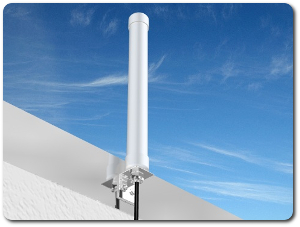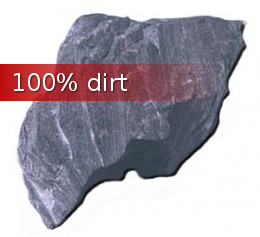200+ mpg is possible today.
Getting Off Oil, Latest news, World news Sunday, July 24th, 2011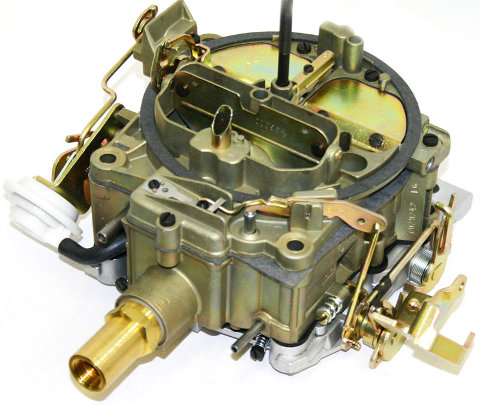
Would you buy a gas electric hybrid that delivered 200+ mpg (miles per gallon)? Sure you would, if the price was right. Is 200 mpg even possible? The answer was yes in 1933 and the answer is yes in 2011.
In 1933, Canadian inventor, Charles Nelson Pogue made headlines when he drove a 1932 Ford V8, 200 miles on a gallon of gas during a demonstration conducted by The Ford Motor Companies in Winnipeg, Manitoba Canada using his super-carb system. In fact, many people attested to these mileage claims as The Pogue Carb went into production and was sold openly.
Why don’t we have 200+ mpg cars and trucks today? One of the crucial factors of a high mileage combustion engine system is the use of “white” gasoline, which contains no additives. It was soon after Pogue’s much publicized test that oil companies started adding lead to the fuel. Lead is an anti-catalyst that rendered Pogue’s carburetor as inefficient as a regular carb.
Why did the oil companies act quickly to contaminate pure gasoline with lead and later other additives? Because Charles Nelson Pogue was awarded a US patent based on the design and the verified demonstration of its function in 1933, sponsored by the Ford Motor Companies. US Patent # 2,026,798 was awarded to Charles Nelson Pogue on January 9, 1936. The patent states: “This invention relates to carburetors suitable for use with internal combustion engines and in an improvement on the carburetors shown in my Patents # 1,938,497 and # 1,997, 497. ” Pogue’s patent describes in great detail the workings of his high mileage vapor carburetor. This carburetor was developed and patented to improve the efficiency of internal combustion engines by atomizing and vaporizing liquid fuel before it is injected into the combustion chambers. By atomizing and vaporing liquid fuel higher fuel efficiency is achieved and far less and almost near zero emissions is produced.
It is an often a misconception that most vehicles on the road today already burn gasoline vapors in their internal combustion engines. The fact of the matter is, gasoline powered vehicles today burn finely divided particles or droplets that are sprayed from the carburetor or fuel injectors, into the engine cylinders.
This is a very wasteful process of converting gasoline or diesel to energy. Maybe 20-30 % efficiency at most. It has been known and demonstrated for 60 or more years that burning gasoline vapors will give easily 5 times the mpg and near zero emissions. Actually if the vapors are heated to the necessary temperature of 450 degrees F, the gasoline vapors are actually fractionalized by catalytic cracking and converted to smaller light molecular hydrocarbons, methane and methanol.
The problem with today’s internal combustion engine technology
Gas prices are going up, more cars are on the road, and more cities are experiencing extreme vehicle exhaust pollution. With todays technology this was to be expected. Even with the manufacturing of gas electric hybrids the problem still and will continue to exist. Why? Because the gas part of the gas electric hybrids is what gives the vehicles any kind of usefulness as the batteries are quickly depleted in electrical charge and can go no farther than 50 kilometers (on electricity). The gasoline part is still very fuel inefficient. Even though they are sold as green vehicles they still emit high levels of CO2 emissions. The reason why they still are fuel inefficient and major polluters is because the internal combustion engines of the hybrids are still injecting the same old finely divided particles or droplets of gasoline and not gas vapor.
The development of Electric Vehicles, Hybrid Electric Vehicles and Fuel Cell vehicles are not proceeding at a fast enough pace to make a dent cleaning up the air in most cities. The new Hybrid Electric Vehicles are a sham as they cannot travel any practical distances on electric power. Gasoline is still needed in large quantities and they still create a lot of pollution because they still haven’t changed how the gasoline is consumed.
The introduction of fuel injectors didn’t reduce the amount of fuel entering the combustion chamber nor did they atomize and vaporize the fuel so that it would burn completely. Instead the fuel injectors injects more fuel into the combustion chamber by injecting the fuel under high pressure. The manufacturer designed it that way and that is the only reason why all “return-type” fuel injection systems have a return fuel line – to return the excess of fuel being injected into the engine back to the fuel tank.
Take two of the newest hybrid trucks that are sold by the government owned GM (Guzzling Motors) today. Both the 2010 Chevrolet Tahoe Hybrid and 2010 GMC Yukon Hybrid having fuel economy ratings of only 20 mpg city and highway. Both are hybrids so you would assume that they would be more fuel efficient. The only green on these hybrids is the name hybrid that is glued to these gas guzzling and CO2 emitting trucks. Neither have any increase in fuel efficiency, in fact they have worse fuel efficiency than 1987 vehicles that had fuel economy ratings of 22.1 miles per gallon.
The solution
Ok now what? How do we increase the fuel efficiency of the vehicles on our roads and achieve near zero emission? The simplest solution is to manufacture vapor fuel systems, like Charles Nelson Pogue did. His patent is available for all to review, even the automobile manufacturers. I am sure with all of the high priced engineers on the payroll of GM, Ford and Chrysler one of them can use Pogue’s patented idea and incorporate a vapor fuel system into the design of all of their vehicles. I am sure one of their engineer geniuses can even come up with an after market fuel vaporizing conversion system that any auto mechanic could install on the millions of vehicles already on the road. If Charles Pogue could design, patent and equipped a Ford V8 coupe that reportedly got over 200 MPG so can the more advanced engineers employed by GM, Ford and Chrysler. Will the Big 3 actually do this and give us consumers a vehicles with much higher fuel efficiency and near zero emissions? Highly unlikely.
If they won’t design and produce more fuel efficient and clean vehicles then why not take matters into our own hands and finance and build a cleaner and more fuel efficient vehicle – or at least a fuel vaporizing conversion system that can be attached to all of their vehicles. Why not design and build a true green hybrid vehicle. A 200+ mpg gas electric hybrid. Impossible? I’ve already shown you that it is possible and Charles Nelson Pogue is the proof.
The Big 3 have a lot of money but they won’t invest any of it towards building a more fuel efficient and near zero emission vehicle. The little guys have the design and know how to build them but no money to manufacture a high mileage and near zero emission fuel system, let alone a whole vehicle. That is the main reason why the Big 3 are not the least bit threatened by any new technology emerging that will improve the inefficiency of their polluting vehicles.
Pogue drastically improved the fuel efficiency of a 1930s Ford V8, over 70 years ago yet none of the Ford vehicles on the road today have fuel efficiencies higher than 45 mpg. The 2011 Ford Fusion has a fuel efficiency of only 41 city/34 hwy (EPA estimated ). You would think Ford or one of the other Big 3 would have hired Pogue to improve on his design and at least one of the Big 3 would have build their vehicles with Pogue’s carburetor. Since your vehicle doesn’t get 200 mpg or even 100 mpg you know they didn’t. Instead Ford bought Pogue’s patent and shelved it. When the money he got from Ford (to buy the patent) ran out Pogue went to work making oil filters for the motor industry.
A brilliant idea was wasted and today we are still driving around in fuel inefficient and polluting cars and trucks. Green hybrids doesn’t mean environmentally friendly. Green refers to the huge amounts of green paperbacks you are going to have to fork over to GM, Ford and Chrysler to reduce CO2 emissions and save the planet. In case you haven’t noticed, the price tag for all of their Hybrids are nearly double the price of their strictly gasoline vehicle. That over pricing is on purpose. Why? People will only buy what they can afford. With the high cost of living and our low paying jobs, we will always choose the lower price. The poor and middle class can’t afford the price tag of a hybrid and the Big 3 auto makers know that. The Big 3 have purposely overpriced their hybrids so that you and I are forced to buy their cheaper polluting gas guzzlers.
You would think that with gasoline prices now $1.26 a liter or better that a push for greater fuel economy would be urgently sought. Not so for Canada. Why? Three words – Alberta Tar Sands. With the higher gasoline prices the tar sands are making a profit. With $1.26 a liter here in Canada the Alberta tar sands – the worst man made catastrophe on Earth – Canadians are being fleeced, not only financially but environmentally. Here in Canada, millions of gallons of our limited amount of fresh water is being drained to extract the dirtiest and most toxic oil on Earth from Alberta’s tar sands. Fresh water we and all life in Canada need to survive.
The Alberta Tar Sands (mostly foreign owned) is stealing our essential supply of fresh water. Every day 2 to 4 million barrels of precious fresh water is used and rendered useless in Alberta Canada to produce the dirtiest and most toxic oil on Earth. Today with gasoline prices of $1.26 + a liter the Alberta Oil Sands is a booming industry with as many as 1 million barrels of the dirtiest and most toxic synthetic oil being produced there every day. Every day 2 to 4 million barrels of fresh water is also being made into the most toxic sludge water on Earth. Tar sands oil is laden with sulfur, arsenic and heavy metals, and contaminates millions of barrels of fresh water in processing. Mining and refining tar sands crude produces up to three times as much greenhouse gas per barrel as conventional crude oil. America currently consumes 1.35 million barrels of tar sands oil each day. Planned expansions will nearly triple our reliance on this toxic fuel.
Is $1.26 + a liter a fair price to pay to destroy our entire fresh water supply? Is $1.26 + a liter a fair price to pay to destroy our environment? You and I know that the answer to both questions is no. We have the technology today to build 200+ mpg vehicles. We even have the technology today to power our vehicles using nothing but sea water. We have the technology to power all our vehicles with free electricity. We have the technology today to power all our vehicles with no gasoline at all.
Short URL: https://presscore.ca/news/?p=872

 The Halifax International Security Forum was founded in 2009 as a propaganda program within the German Marshall Fund (founded June 5, 1972 by West German Chancellor Willy Brandt) by the Crown in Canada using Crown Corp ACOA & DND funds. The Halifax International Security Forum is a front that is used to recruit top US, UK and Canadian gov and military officials as double agents for Canada's WWI, WWII enemy and wage new Vatican Germany Cold War.
High Treason: s.46 (1) Every one commits high treason who, in Canada (c) assists an enemy at war with Canada, ..., whether or not a state of war exists". Every one who, in Canada assists Canada's enemies wage "piecemeal WWIII" Cold War by organizing, funding and participating in the Germany government politically and militarily benefitting / lead Halifax International Security Forum is committing high treason.
The Halifax International Security Forum was founded in 2009 as a propaganda program within the German Marshall Fund (founded June 5, 1972 by West German Chancellor Willy Brandt) by the Crown in Canada using Crown Corp ACOA & DND funds. The Halifax International Security Forum is a front that is used to recruit top US, UK and Canadian gov and military officials as double agents for Canada's WWI, WWII enemy and wage new Vatican Germany Cold War.
High Treason: s.46 (1) Every one commits high treason who, in Canada (c) assists an enemy at war with Canada, ..., whether or not a state of war exists". Every one who, in Canada assists Canada's enemies wage "piecemeal WWIII" Cold War by organizing, funding and participating in the Germany government politically and militarily benefitting / lead Halifax International Security Forum is committing high treason.
 Please take a moment to sign a petition to
Please take a moment to sign a petition to 




























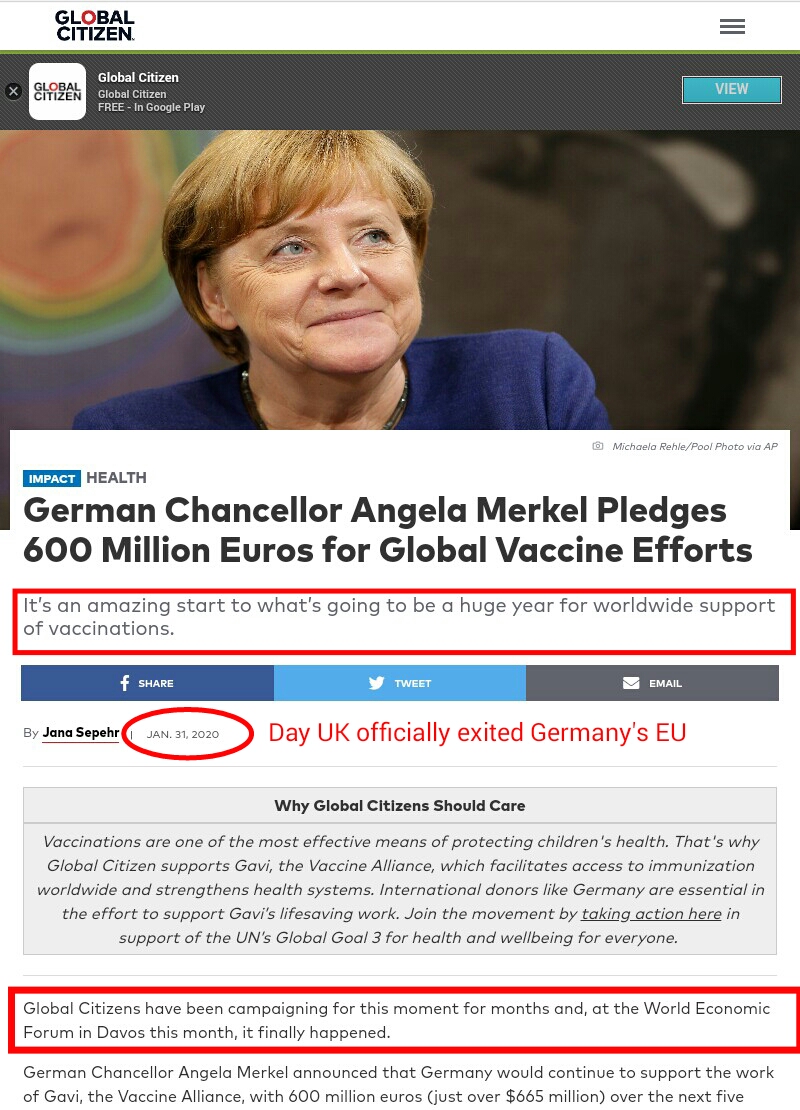





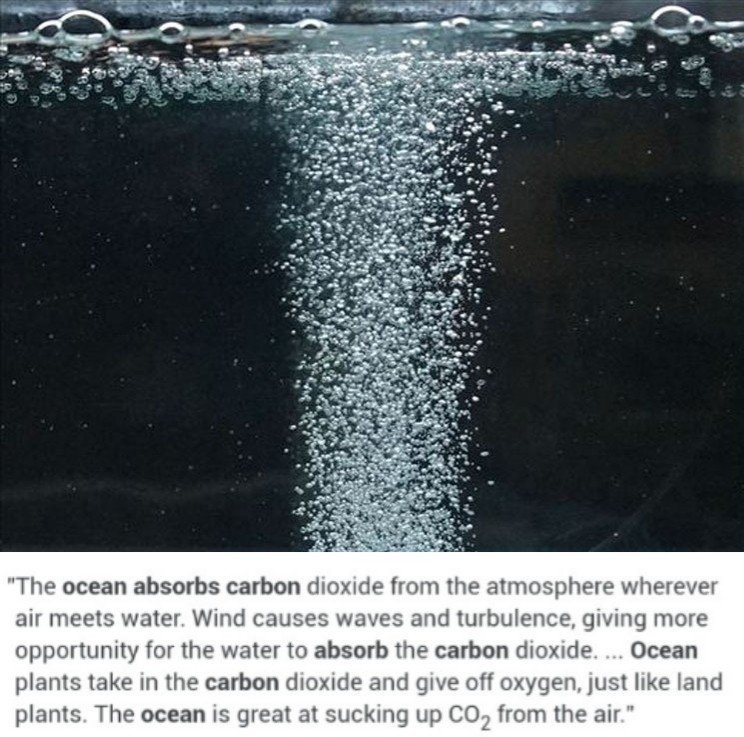






 1917 Code of Canon Law, Canon 185 invalidates (voids) all papacies since October 26, 1958 due to the fact Cardinal Giuseppe Siri was elected Pope on the Third ballot on Oct 26 1958 but the new Pope Gregory XVII was illegally prevented from assuming the office. A Pope was elected on October 26, 1958. Thousands of people witnessed a new Pope being elected by seeing white smoke and millions were informed by Vatican radio broadcasts beginning at 6:00 PM Rome time on October 26, 1958. The papacy of Francis, Benedict, John Paul II, John Paul I, Paul VI, John XXIII and any and all of their respective doctrines, bulls, letter patents and the Second Vatican Council are all invalidated (having no force, binding power, or validity) by Canon 185 because the 1958 conclave of cardinals elected Cardinal Giuseppe Siri Pope on Oct 26 1958. Cardinal Giuseppe Siri accepted the papacy by taking the name Pope Gregory XVII but was illegally prevented from assuming his elected office.. According to Canon 185 Cardinal Angelo Giuseppe Roncalli illegally assumed the papacy 2 days later by fraud and grave fear, unjustly inflicted against Cardinal Giuseppe Siri who was lawfully elected Pope Gregory XVII. Because no Pope has been lawfully elected since October 26, 1958 the Holy See (la Santa Sede/Seat) remains vacant.
1917 Code of Canon Law, Canon 185 invalidates (voids) all papacies since October 26, 1958 due to the fact Cardinal Giuseppe Siri was elected Pope on the Third ballot on Oct 26 1958 but the new Pope Gregory XVII was illegally prevented from assuming the office. A Pope was elected on October 26, 1958. Thousands of people witnessed a new Pope being elected by seeing white smoke and millions were informed by Vatican radio broadcasts beginning at 6:00 PM Rome time on October 26, 1958. The papacy of Francis, Benedict, John Paul II, John Paul I, Paul VI, John XXIII and any and all of their respective doctrines, bulls, letter patents and the Second Vatican Council are all invalidated (having no force, binding power, or validity) by Canon 185 because the 1958 conclave of cardinals elected Cardinal Giuseppe Siri Pope on Oct 26 1958. Cardinal Giuseppe Siri accepted the papacy by taking the name Pope Gregory XVII but was illegally prevented from assuming his elected office.. According to Canon 185 Cardinal Angelo Giuseppe Roncalli illegally assumed the papacy 2 days later by fraud and grave fear, unjustly inflicted against Cardinal Giuseppe Siri who was lawfully elected Pope Gregory XVII. Because no Pope has been lawfully elected since October 26, 1958 the Holy See (la Santa Sede/Seat) remains vacant.
 Hold the Crown (alias for temporal authority of the reigning Pope), the Crown appointed Governor General of Canada David Lloyd Johnston, the Crown's Prime Minister (servant) Stephen Joseph Harper, the Crown's Minister of Justice and Attorney General Peter Gordon MacKay and the Crown's traitorous military RCMP force, accountable for their crimes of treason and high treason against Canada and acts preparatory thereto. The indictment charges that they, on and thereafter the 22nd day of October in the year 2014, at Parliament in the City of Ottawa in the Region of Ontario did, use force and violence, via the staged false flag Exercise Determined Dragon 14, for the purpose of overthrowing and besieging the government of Canada contrary to Section 46 of the Criminal Code. In a society governed by the rule of law, the government and its officials and agents are subject to and held accountable under the law. Sign the online
Hold the Crown (alias for temporal authority of the reigning Pope), the Crown appointed Governor General of Canada David Lloyd Johnston, the Crown's Prime Minister (servant) Stephen Joseph Harper, the Crown's Minister of Justice and Attorney General Peter Gordon MacKay and the Crown's traitorous military RCMP force, accountable for their crimes of treason and high treason against Canada and acts preparatory thereto. The indictment charges that they, on and thereafter the 22nd day of October in the year 2014, at Parliament in the City of Ottawa in the Region of Ontario did, use force and violence, via the staged false flag Exercise Determined Dragon 14, for the purpose of overthrowing and besieging the government of Canada contrary to Section 46 of the Criminal Code. In a society governed by the rule of law, the government and its officials and agents are subject to and held accountable under the law. Sign the online  Two of the most obvious signs of a dictatorship in Canada is traitorous Stephen Harper flying around in a "military aircraft" and using Canadian Special Forces "military" personnel from JTF2 and personnel from the Crown's traitorous martial law "military" RCMP force as his personal bodyguards.
Two of the most obvious signs of a dictatorship in Canada is traitorous Stephen Harper flying around in a "military aircraft" and using Canadian Special Forces "military" personnel from JTF2 and personnel from the Crown's traitorous martial law "military" RCMP force as his personal bodyguards.
















